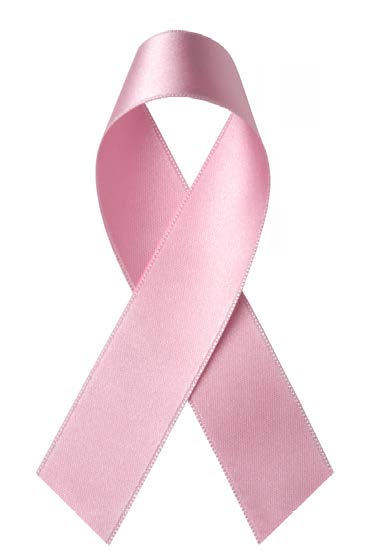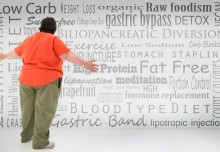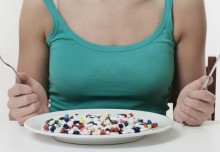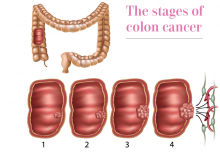This summary of the latest research explains why you can safely consider soy as an estrogen alternative
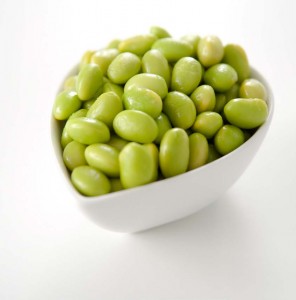
If you are considering soy to treat your menopausal symptoms, somewhere along the line you might have wondered if soy food either increased your risk of developing breast cancer or was safe to take if you have breast cancer. There have been hundreds of scientific papers on this over the past two decades. Interest in this relationship began with a workshop organized by the US National Cancer Institute in 1990(1). The participants concluded that soybeans contained a number of compounds with the ability to inhibit, delay or reverse cancer called chemopreventives.
Most focus was on a single group of compounds called isoflavones. Isoflavones are commonly referred to as phytoestrogens or plant estrogens. The worry was about one particular cancer, cancer of the breast.
This focus on soy was due to three observations:
- There are low breast cancer rates in soyfood consuming countries
- Japanese women who move to the United States have increased breast cancer rates
- Soy isoflavones are able to function as anti-estrogens (the ability to inhibit the effects of estrogen)
However, by the year 2000, although the role of soy in reducing breast cancer risk was still rigorously being studied, concern arose that because they contain isoflavones, the isoflavones in soyfoods might actually increase breast cancer risk in high-risk women and be harmful to breast cancer patients. Oncologists began recommending that their breast cancer patients avoid soy. With researchers talking about both potential benefits and harm, it is no wonder soy became and is still is a very confusing and controversial food.
Fortunately, within the past several years, research has cleared up much of the confusion on the relationship between soy and breast cancer. In 2012, both the American Institute for Cancer Research and the American Cancer Society concluded that breast cancer patients can safely consume soyfoods. And in May 2013, after a comprehensive study published in the journal Oncology, many renown researchers reached a similar conclusion.
In 2012, both the American Institute for Cancer Research and the American Cancer Society concluded that breast cancer patients can safely consume soyfoods
Is Soy Safe for Women With Breast Cancer?
There is plenty of evidence supporting the conclusion that soyfoods are safe for breast cancer patients. Recognize first of all that the original concerns were based on the estrogenic-like effect of isoflavones and results from studies in mice. However, not only are isoflavones very different from the hormone estrogen, but new research is making it unclear that the hormone estrogen raises breast cancer risk. In fact, the U.S. Preventive Services Task Force recently concluded, “that there is adequate evidence that the use of estrogen alone results in a small reduction in the risk for developing or dying of invasive breast cancer”(2). It is really the combination hormones (estrogen plus progestin) that raise risk. Also, recent research has raised considerable question about the usefulness of the mice studies I mentioned earlier for understanding the effects of isoflavones and soy on humans.
Undoubtedly, the strongest evidence that soy is safe for breast cancer patients to consume was published in 2012 in a pooled analysis of three studies, two conducted in the United States and one in China (3). This analysis involved 9,514 breast cancer survivors who were followed for approximately 7.4 years. Approximately half of the women were Chinese and half Caucasian, and approximately half were pre-menopausal and half postmenopausal.
After the breast cancer patients were enrolled into their respective studies, the researchers carefully analyzed the patient’s dietary intake, including their soy intake. Over the seven years the women were followed, 881 died from their disease and 1348 suffered a recurrence of their cancer.
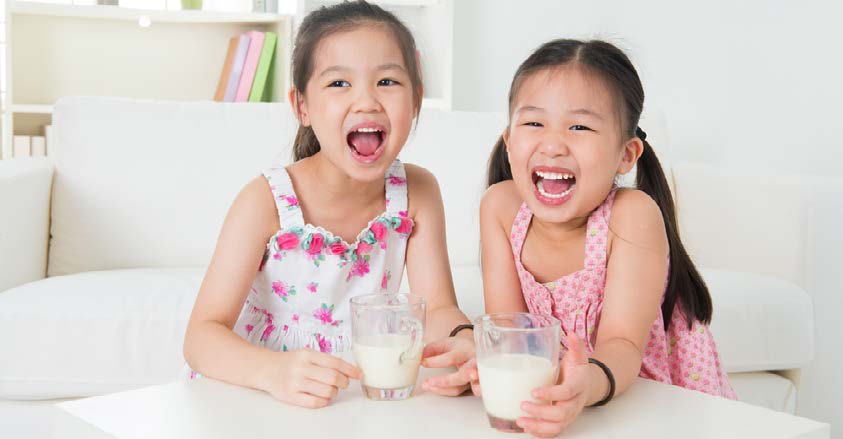
For the analysis, women were divided into three groups according to the amount of soy they consumed. Results showed that those women who consumed the most soy after a diagnosis of their disease were 17% less likely to die from breast cancer and 25% less likely to report a recurrence of their cancer. The latter finding was statistically significant, indicating it was highly unlikely to have occurred by chance. This analysis was by far the largest of its kind and it actually found that consuming soyfoods was beneficial, not harmful, to breast cancer patients. The size and duration of this type of epidemiologic or population study is much more important than any type of animal study.
For soy to reduce breast cancer risk, it needs to be consumed when young
There are no randomized clinical (human intervention) trials to evaluate the impact of soy or isoflavone intake on the prognosis of breast cancer patients. This type of study would be quite expensive, although with the epidemiologic evidence showing soy intake benefits breast cancer patients, perhaps one will be conducted. There have been clinical trials that have evaluated the impact of soy and isoflavones on biomarkers or indicators of breast cancer risk. Two of the most important biomarkers are breast tissue density (also referred to as mammographic density) and breast cancer proliferation. Breast tissue density can be assessed by mammograms, whereas breast cancer proliferation requires a breast biopsy.
Agents and drugs that increase tissue density and breast cell proliferation increase breast cancer risk whereas those that decrease density and proliferation decrease risk. These biomarker trials have shown that even large amounts of soy taken in a variety of forms have little if any effect on breast tissue. So the results of the clinical research show neither harm nor benefit.
Thus, they are a persuasive argument for the safety of soyfoods. Why the epidemiologic data show benefit and the clinical studies don’t is unclear. Maybe it’s because the intervention studies are conducted for too short of time to see effects. Or perhaps, soy is improving the prognosis of breast cancer patients in ways not identified by the biomarkers evaluated. Soy, for example, could be inhibiting angiogenesis (blood vessel growth), which is required for tumor growth and metastasis. Although speculative, there is evidence in support of this suggestion.
Given all the data, at this point it is reasonable for clinicians to allow soyfood use by patients for whom soyfoods already represent a normal part of their diet and not to discourage other survivors from moderate consumption. It seems a bit premature to recommend soy consumption specifically to improve breast cancer prognosis. On the other hand, because many breast cancer patients will live for many years after their diagnosis of breast cancer, they need to be mindful of consuming a diet that is consistent with overall health. In this regard, soyfoods can be wholly recommended.
Can Soy Help Prevent Breast Cancer?
Finally, is there evidence that soyfoods can help to prevent the development of breast cancer? The answer is absolutely. But that proposed benefit may not apply to those of you reading this article. Studies from Asia do in general show that women who consume greater amounts of soy are less likely to have breast cancer. In contrast, and as discussed above, the clinical trials don’t show soy beneficially affects breast cancer biomarkers. Again, it could be that soy is working in ways that aren’t reflected by changes in the biomarkers evaluated. However, there is another explanation, and a rather exciting one, for the discrepancy between the Asian studies and the clinical studies: for soy to reduce breast cancer risk, it needs to be consumed when young (4;5).
Early life events have a great impact on a woman’s later risk of developing breast cancer. Among those early events, the type of diet consumed during childhood and/or during the teenage years, may be particularly important. In regard to soy, four studies have found that consuming about one or one and a half servings per day during the teen years is associated with huge reductions in the risk of developing breast cancer. The amount of soy consumed during adulthood did not impact on these findings. One small study found that the most beneficial period to consume soy was during childhood. Studies also show exposure to soy isoflavones for even just brief periods of time when animals are young reduce the incidence and/or number of breast tumors. In addition, several biological explanations for these protective effects have been proposed.
For now, the notion that consuming soyfoods when young reduces breast cancer risk later in life is speculative. No definitive data exist. Nevertheless, because soyfoods are very nutritious, and research suggests relatively little soy is needed for protection, it certainly makes sense for young females to aim for consuming a serving of soy every day.
Conclusions and Intake Recommendations
For more than a decade, there has been concern that soyfood consumption could be harmful to breast cancer patients. However, impressive evidence published over the past several years suggests that in fact, consuming soy after a diagnosis of breast cancer may actually improve outcome. While it may be premature for women with a history of breast cancer to consume soy specifically for the purpose of improving their prognosis, the evidence indicates they can safely make it a part of their diet. Studies suggest one to three servings per day is appropriate. Examples of a serving are one cup of soymilk, ½ cup tofu and 1-ounce soynuts. For prevention, an exciting hypothesis is that consuming soy when young reduces breast cancer risk later in life. Although speculative, it makes sense given the nutritional benefits of soyfoods, for young females to consume one serving of soy per day.


